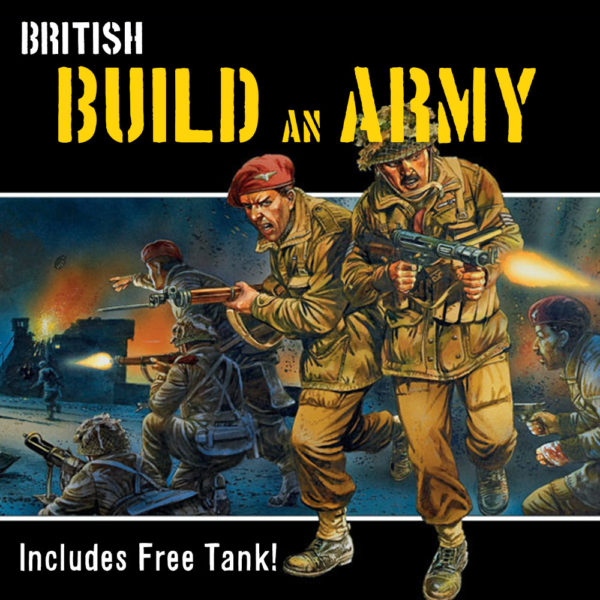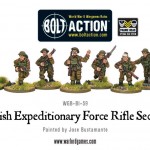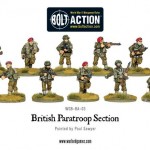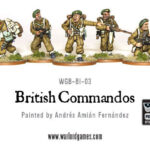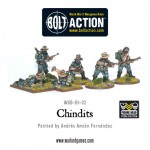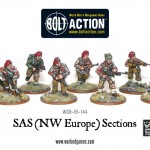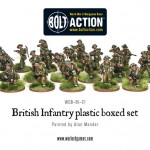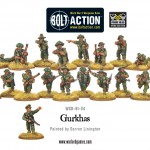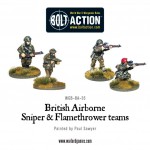Chris Brown schools all of us about actual effective rifle range and their transaction in Bolt Action.
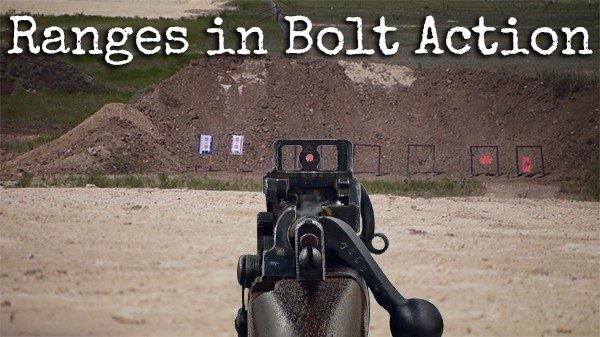
Wargamers are obsessed with ranges, or rather they are obsessed with the theoretical performance of weapons and vehicles. Taking the common-or-garden Bolt Action rifle as an example, it’s not uncommon to hear wargamers complain that their soldiers cannot hit the enemy on the far side of the table – though oddly enough they are not at all unhappy that the enemy cannot hit them beyond 24 inches. Superficially they have a point. Even the worst of Bolt Action rifles are pretty-accurate at 500 yards and the bullet can easily inflict a fatal blow well beyond that. In fact, the accuracy and lethality of a rifle might make you wonder why the casualty rates of World War Two were not even greater than they were.
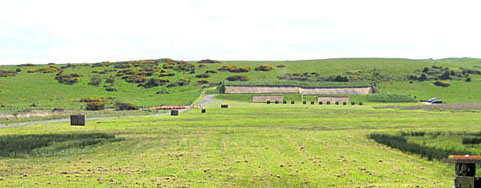
Those targets are 500 yards!
Obviously, we cannot reflect a rifle range of hundreds of yards on the wargame table unless we have a table the size of a tennis court and we might rationalise the limited size of a tabletop by thinking in terms of ‘effective’ ranges. One of the reasons that wargamers and historians tend to be rather vague about ‘effective range’ is that nobody really knows what we mean by the term. A rifle may be accurate (and deadly) at 500 yards, but is the firer a good enough shot to hit someone at that distance?
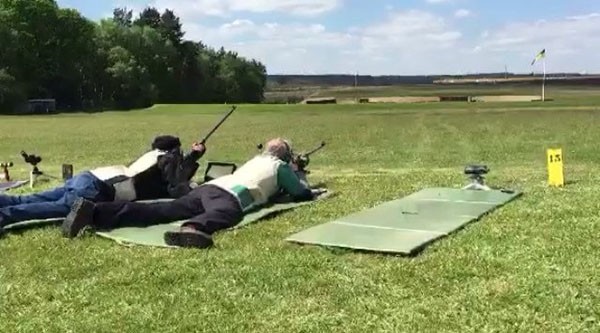
Those targets are 900 yards!
Long ago I trained quite extensively with Bolt Action rifles – genuine WW2 relics the lot of them! Despite a good deal of practice and expert training and the fact that I have excellent eyesight, strong arms and that I am not in the least bit weapon-shy, I can absolutely promise you that any man-sized target is safe from me at 200 yards, let alone 500. I just can’t shoot to save my life. Time spent (more than once) ‘zeroing’ the sights on the rifle to account for distance to target was, I’m afraid, totally wasted…along with considerable quantities of .303 ammunition. I rather liked shooting; I was just rubbish at it. The question is, was firing at distance on the range of any value? Would I have ever actually had to use my ‘leaf sight’? The short answer is ‘no’.
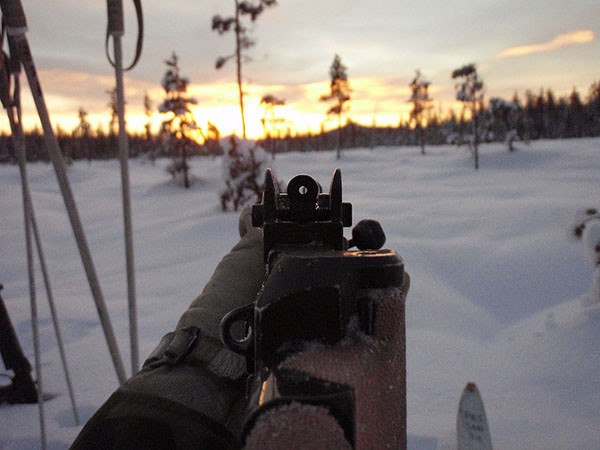 Note: That the far tree line right at the back is roughly 500 yards!
Note: That the far tree line right at the back is roughly 500 yards!
In part that would be because any distance firing on my part would have done no more that give away my position – and waste another bullet – but just as importantly there would be very little chance that I would ever see an enemy at 200 yards, and even that would be rare. If you haven’t done any shooting, it is worth giving some thought to what you can identify out on the battlefield. Find a quiet, narrow stretch of road where you have line of sight to 500 yards and see how easy it is to recognise a human being. Even on a fine, clear day – not too sunny because glare and atmospheric distortion are major factors – it’s hard to tell the difference between a stationary person and a doorway or a telephone box… or a poster…or a dustbin or indeed anything else smaller than a car.
Looking down a straight street is one of the easiest situations for shooting. Compared to searching for targets in a 180-degree arc of woodland, field or a building environment, it’s child’s play and of course we are just looking at people going about their daily business, not at soldiers who are actively trying to avoid being seen and are dashing from one bit of cover to the next. The next project is to get a friend to stand ten foot inside some woods; turn your back and walk 200 paces away from them. Can you see him when you turn around again? Probably not – even if the trees are completely bare of leaves – although can certainly see you.
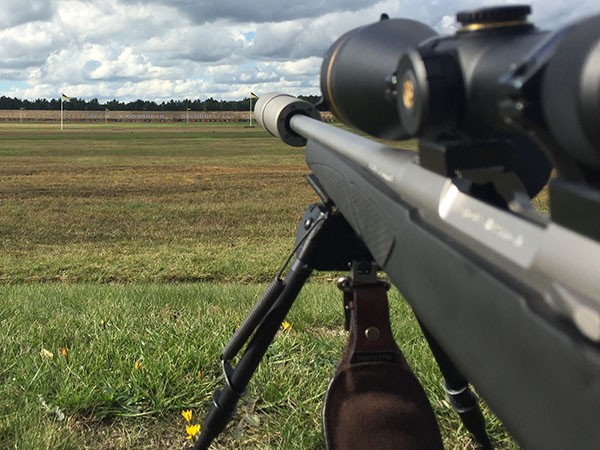
This is roughly 600 meters so 656 yards out!
Even if he is wearing a bright red clown outfit with a great big hat there’s a good chance that you can’t see him well enough to get a good clear shot; now lie down. Unless you are at a higher elevation than your friend he’s almost certainly disappeared from your field of vision even if he is wearing a bright red clown suit. If he’s wearing brown or grey clothes, never mind a camouflage smock, you probably wouldn’t have seen him before you lay down, let alone afterwards.
So how is this all this relevant to our game of Bolt Action? Try this out. Place a completely prone figure at one end of the table then look down the board at eye-level from the opposite end. There’s a good chance you can’t see the figure at all. Now place a thin object – a pencil perhaps – half way between the figure and your eyeball. What does that tell us? It tells us that an irregularity as small as 18 inches (in comparison to a 28mm wargame figure of course) on an otherwise perfectly flat surface is enough to provide total obscurity. We might think that the rifle range is very short when we compare it to the physical capability of a weapon or even to a notion of ‘effective’ range, but in terms of the practical experience of the average soldier a range of 24 inches is actually pretty reasonable; bear in mind that most WW2 firefights were conducted at 100 yards’ distance – in fact mostly less.
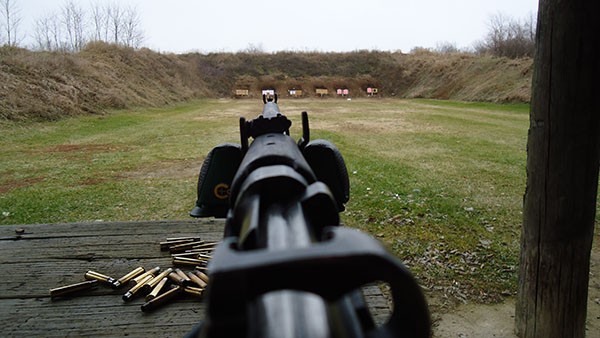
Iron Sight through the Lee Enfield SMLE MK III at 50 yards (45.72meters)
So…the next time you look across the tabletop and feel you should be able to hit the enemy, remember that the enemy figure is standing up, he’s not carefully hugging every scrap of cover as he keeps as low to the ground as he can, the table is unfeasibly flat and – most of all – that you are looking down on the battlefield from a great height; your perspective is not the same as that of poor old private Snooks lurking behind a hedge on your wargame table.
Put that new rifle knowledge to use!
